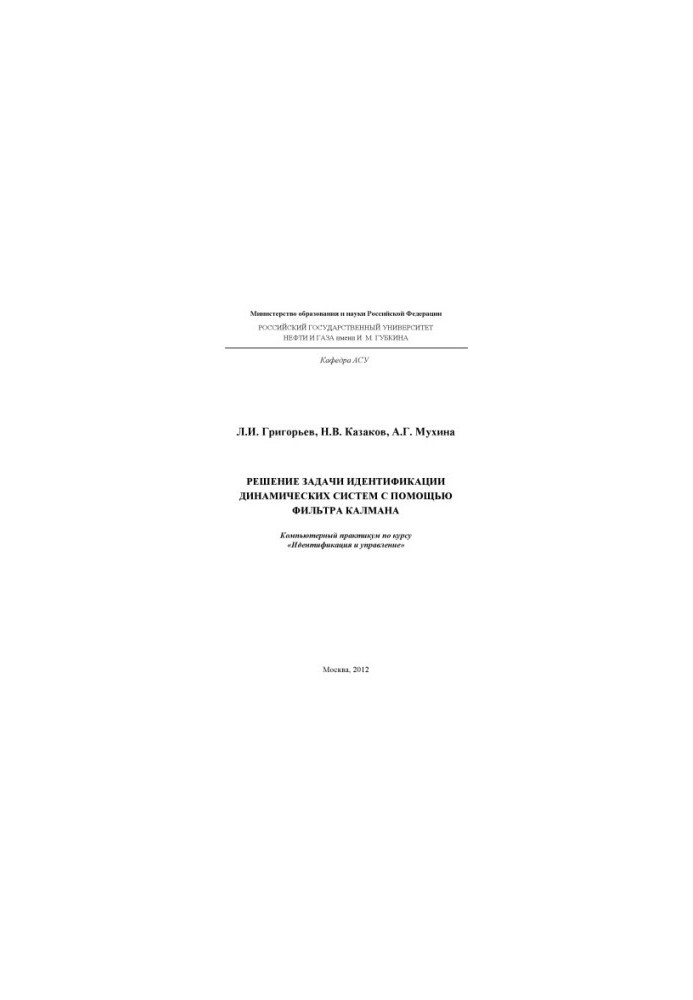Solving the problem of identifying dynamic systems with the Kalman filter
 Instant download
Instant download
after payment (24/7)
 Wide range of formats
Wide range of formats
(for all gadgets)
 Full book
Full book
(including for Apple and Android)
The book “Solving the problem of identifying dynamic systems with the Kalman filter” is a unique work that is the result of the joint work of a group of specialists in the field of automatic control and system theory. This work immerses the reader in the world of complex mathematical models and algorithms that underlie modern technologies for managing dynamic systems. The Kalman filter, as a primary means of identification, has become an integral part of many engineering applications, from aviation to robotics. The book discusses in detail the principles of the filter, its mathematical foundations and practical application in various fields. Readers will be able to learn how this algorithm can effectively monitor the state of systems, predict their behavior and adjust control in real time. This book will be of interest not only to specialists and practitioners in the field of automation and management, but also to students, graduate students and anyone who seeks to deepen their knowledge in the field of systems theory. If you study such disciplines as automatic control, theoretical mechanics or mathematical statistics, then this publication will become an indispensable source of information for you. It will also be useful to those working in the field of software development for management systems. The topics raised in the book cover a wide range of issues related to the identification of dynamical systems. The authors discuss not only theoretical aspects, but also practical challenges faced by engineers in their work. This makes the book especially valuable for those who are looking for practical solutions and examples of applying the Kalman filter in real-world projects. An in-depth understanding of the algorithms and methods presented in the book will help readers not only in solving current problems, but also in developing new, more effective approaches to the management of dynamic systems. The style of the authors is distinguished by clarity and accessibility, which allows even complex mathematical concepts to be explained in simple and understandable language. This makes the book not only useful, but also fascinating to read. The authors seek to convey to the reader not only the theory, but also the practical application of knowledge, which is an important aspect for engineers and researchers. If you are looking for literature that will help you understand modern methods of identifying dynamic systems, then “Solving the problem of identifying dynamic systems using a Kalman filter” will become your reliable assistant. This book will not only expand your knowledge, but also inspire new ideas and projects in the field of automation and management. In conclusion, we can say that this publication is not just a textbook, but a whole encyclopedia of knowledge that will help you in your professional activities. It will become an indispensable resource for anyone who wants to deepen their knowledge in the field of dynamic systems and data filtering. Do not miss the opportunity to discover a world where mathematics and engineering combine to create effective and reliable solutions.
LF/366964509/R
Data sheet
- Name of the Author
- Collective of authors
- Language
- Russian


















